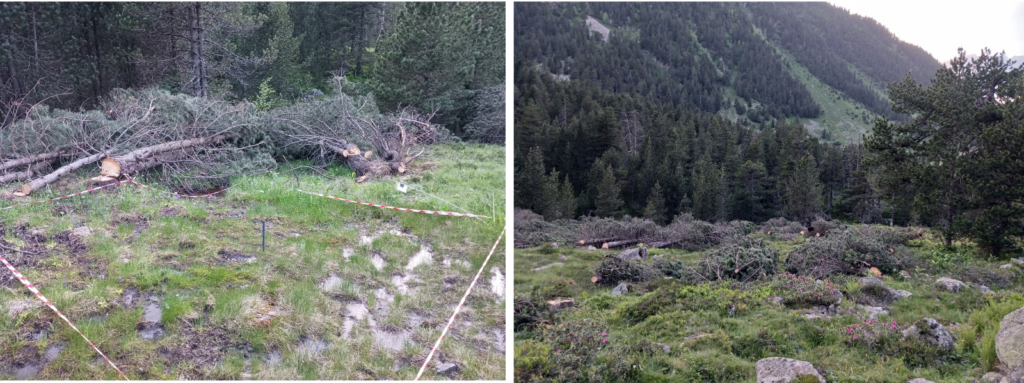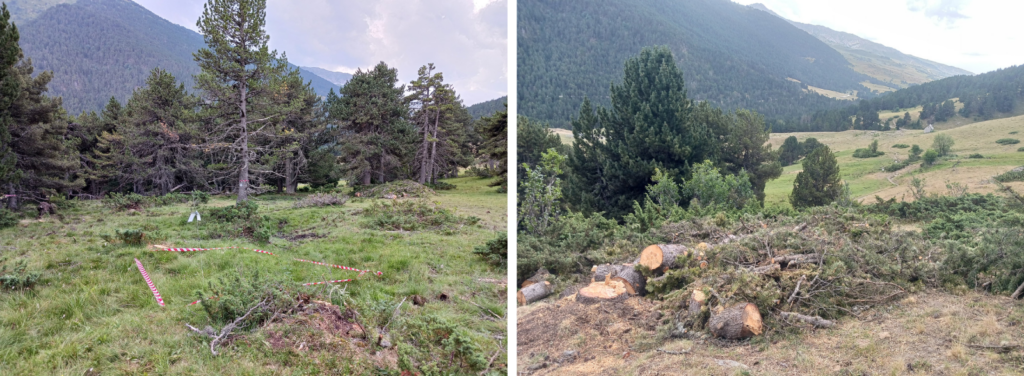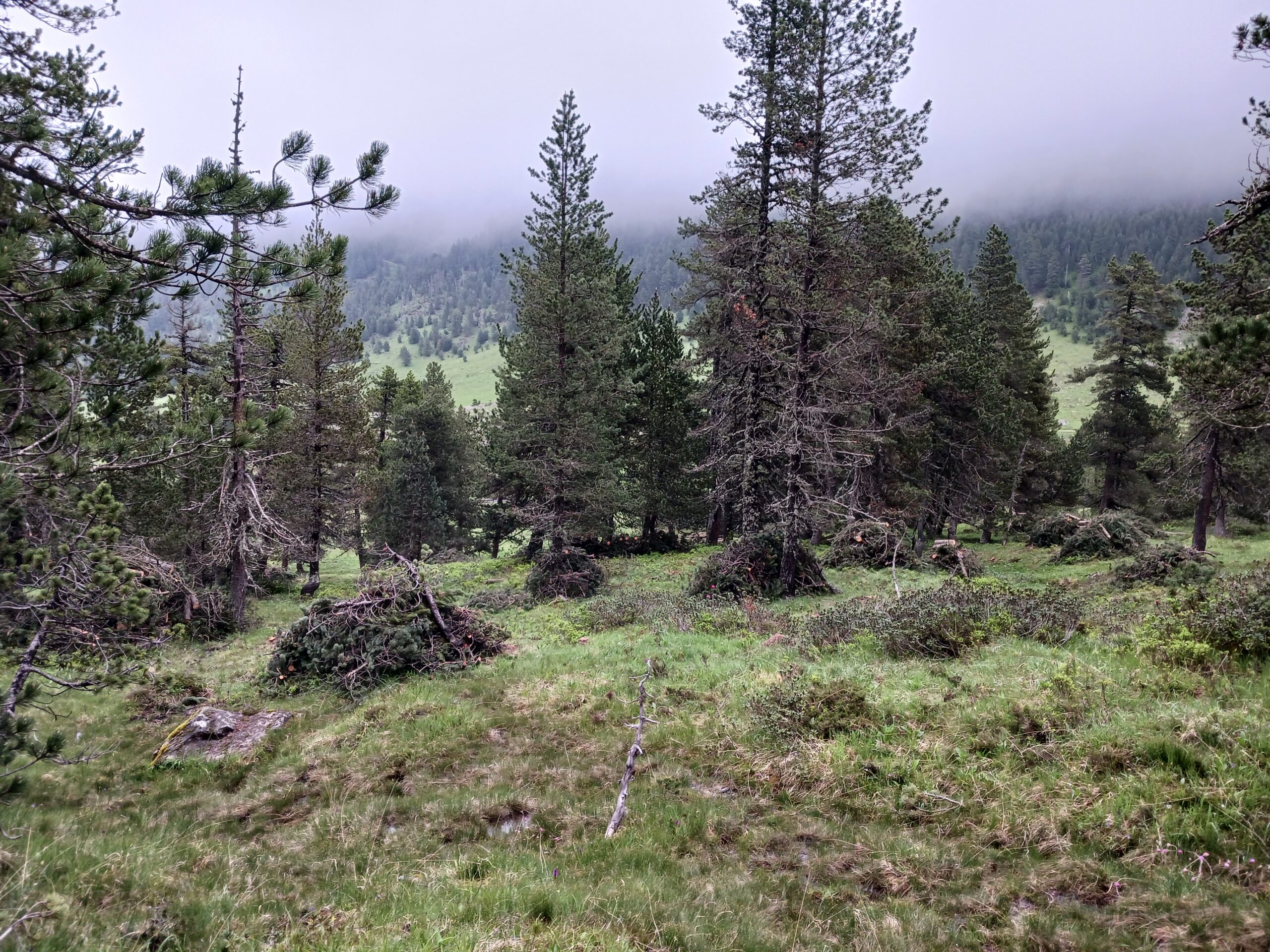The subalpine mires of the Pyrenees are wet ecosystems characterized by the accumulation of decomposing organic matter. Currently, around 27% of the mires in the Central Pyrenees host adult pines, compared to 11% in the mid-20th century. The invasion of trees and the densification of these populations endanger the health and functionality of these ecosystems.
In recent decades, the peatlands have experienced higher temperatures and prolonged droughts, which may have accelerated the invasion of mountain pines (Pinus uncinata), a species characteristic of European mountains. This invasion severely impacts the health of these delicate ecosystems.
During June and July, significant technical restoration actions were carried out in the mires of Locampo and Parros as part of the project to address this threat.
Interventions in Locampo: A wetland partially forested by Pinus uncinata
The Locampo mire in the Ruda Valley (Val d’Aran) have seen a significant increase in the presence of mountain pines in recent decades. Although these trees have been present in the valley for a long time, their growth has been particularly rapid over the last 30-50 years, altering the balance of the mire.
In response, this past spring, selective clearcutting of pines was carried out on nearly 2 hectares of mires in the Peripheral Zone of the Aigüestortes and Estany de Sant Maurici National Park. The objective was to reduce the density of the pines and restore the ecosystem’s balance. More specifically, all pines from a recently colonized and densely populated area were cut and removed, restoring the open peatland and preserving the herbaceous plants and moss populations.

In the adjacent mire, the approach was to reduce the density of the pine population, preserving only the larger or older trees and removing the young, fast-growing ones or those rooted directly in the wettest parts of the system.
Interventions in Parros: A wetland dominated by springs, seeps, and runoff water
In the lower part of the Parros Valley, near Montgarri, the situation is similar. The mountain pine population has densified, and junipers (Juniperus communis) have invaded the mire, reducing the space available for plants and mosses typical of subalpine wetlands.
Clearcutting in this area also covered nearly 2 hectares of wetland systems. Most of the pines—especially the young or small to medium-sized ones—were removed, and the area occupied by junipers was reduced, thereby improving the conservation status of the alkaline fens.

Collaboration for Conservation
These activities have been carried out in collaboration and coordination with the Aigüestortes and Estany de Sant Maurici National Park and the Conselh Generau d’Aran. This joint effort ensures the success of the interventions and proper monitoring of the conservation status over the coming years, making these actions effective not only in the short term but also in the medium and long term.
The LIFE RESQUE ALPYR project continues to work to protect and restore the subalpine wetlands, ensuring that these ecosystems continue to play their vital role in the environment.




